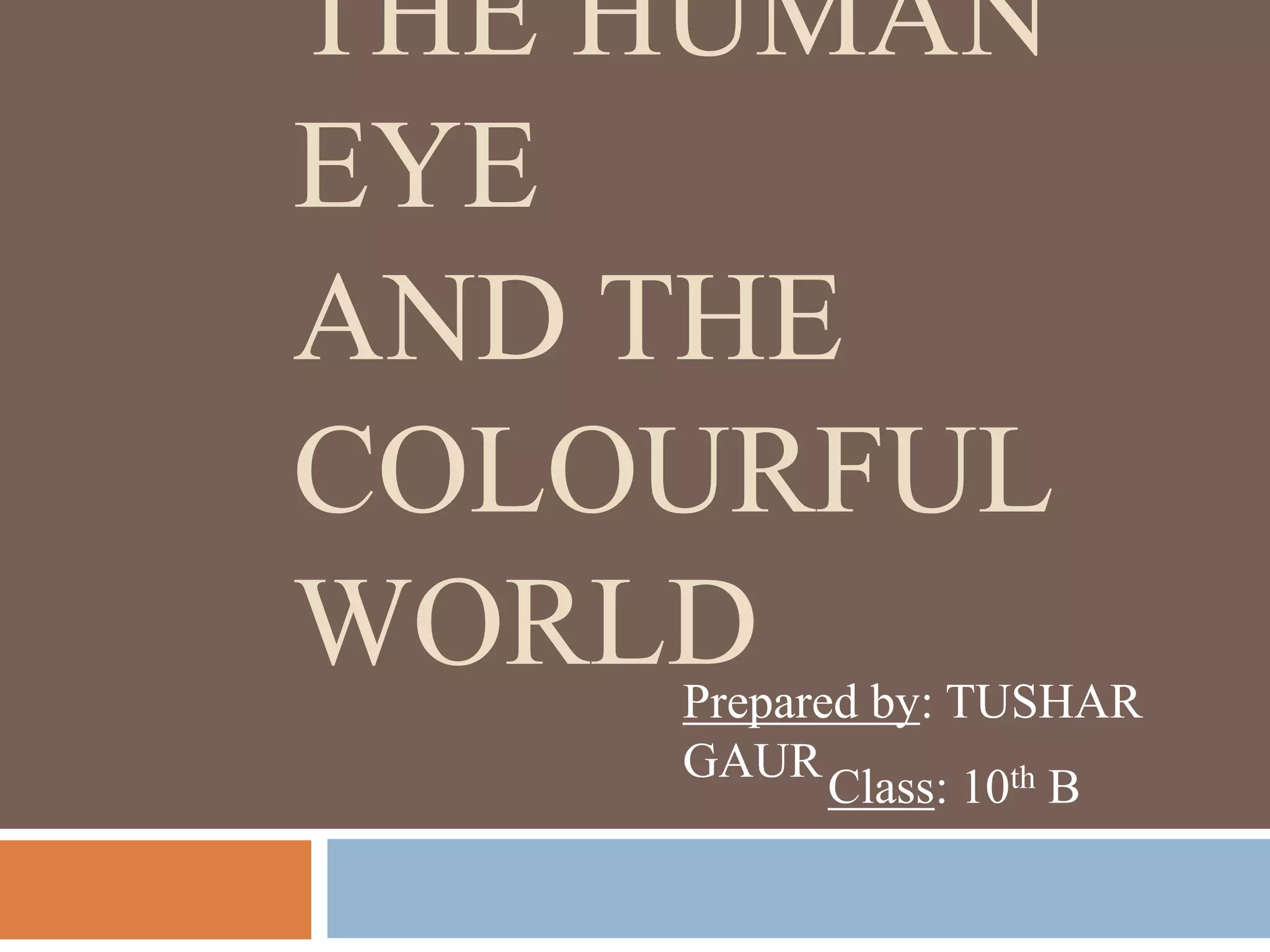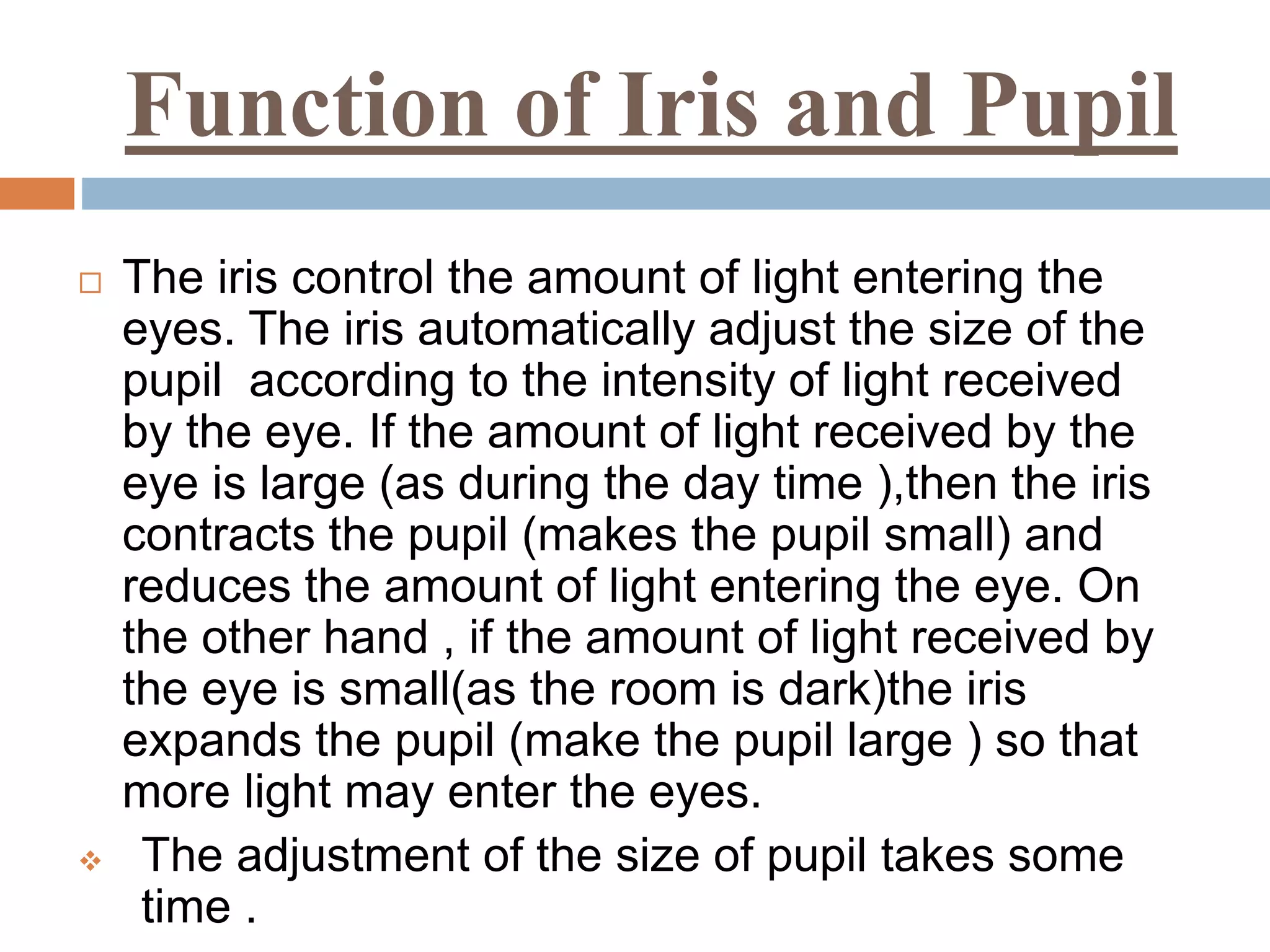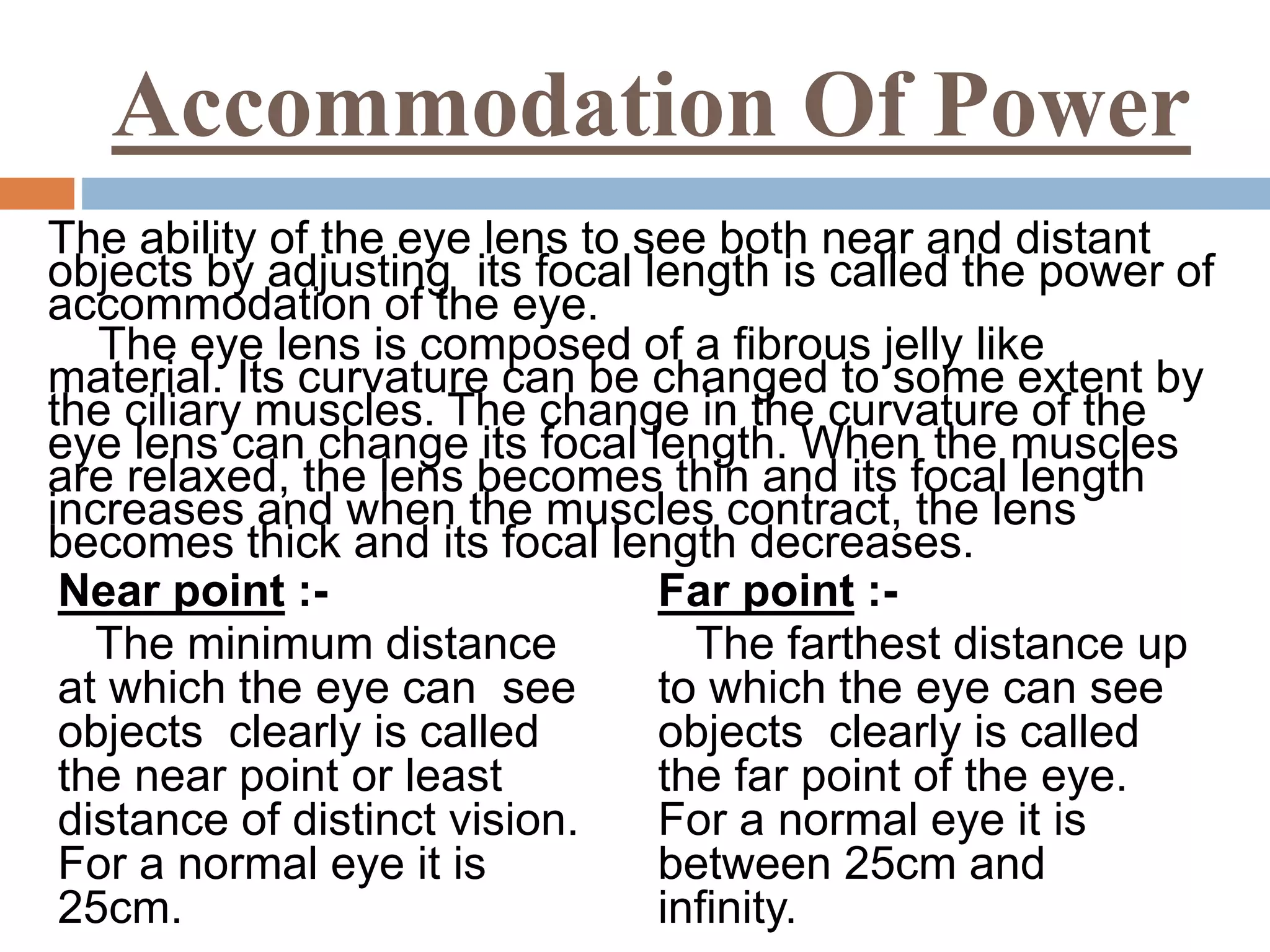The document discusses the structure and function of the human eye. It describes the eye as similar to a camera, with components like the cornea, iris, lens, retina, and vitreous humor working together to allow vision. Light enters through the cornea and is focused by the lens onto the retina. The iris controls the size of the pupil to regulate the amount of light. Common vision defects like myopia and hyperopia are also discussed as well as how they can be corrected.
























